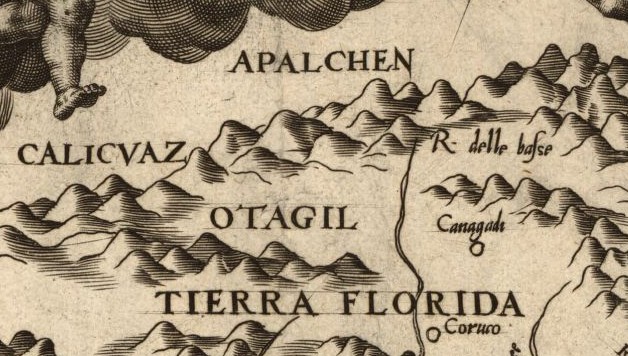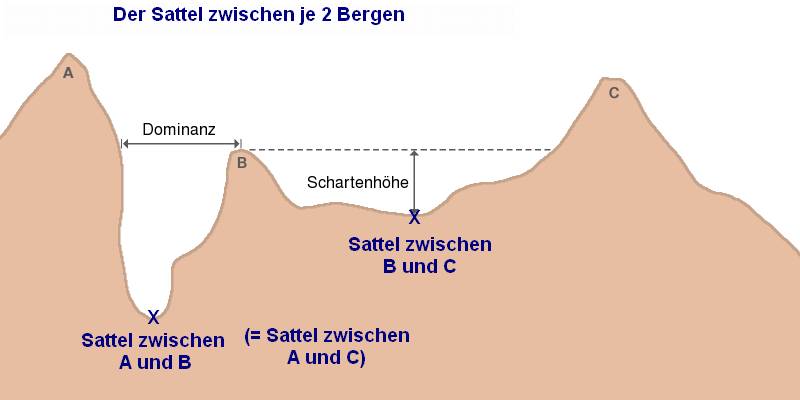|
Gaps Of The Allegheny
The gaps of the Allegheny, meaning gaps in the Allegheny Ridge (now given the technical name Allegheny Front) in west-central Pennsylvania, is a series of escarpment eroding water gaps (notches or small valleys) along the saddle between two higher barrier ridge-lines in the eastern face atop the Allegheny Ridge or Allegheny Front escarpment. The front extends south through Western Maryland and forms much of the border between Virginia and West Virginia, in part explaining the difference in cultures between those two post-Civil War states. While not totally impenetrable to daring and energetic travelers on foot, passing the front outside of the water gaps with even sure footed mules was nearly impossible without navigating terrain where climbing was necessary on slopes even burros would find extremely difficult. The gaps, formed by small streams, provide several usable incline planes, or ramps, connecting the eastern river valley lowlands to the highlands atop the plate ... [...More Info...] [...Related Items...] OR: [Wikipedia] [Google] [Baidu] |
Allegheny Front
The Allegheny Front is the major southeast- or east-facing escarpment in the Allegheny Mountains in southern Pennsylvania, western Maryland, eastern West Virginia, and western Virginia, USA. The Allegheny Front forms the boundary between the Ridge-and-Valley Appalachians to its east and the Appalachian Plateau (locally called the Allegheny Plateau) to its west. The Front is closely associated with the Appalachian Mountains' Eastern Continental Divide, which in this area divides the waters of the Ohio/Mississippi river system, flowing to the Gulf of Mexico, from rivers flowing into Chesapeake Bay and from there into the Atlantic Ocean. The Allegheny Front and the Eastern Continental Divide do not always coincide; for example, the North Branch of the Potomac River begins well west of the Front, at the Fairfax Stone near the southwestern tip of Maryland, about and across the actual divide from the headwaters of the Youghiogheny River draining northwards into the Monongahela ... [...More Info...] [...Related Items...] OR: [Wikipedia] [Google] [Baidu] |
Delaware Valley
The Delaware Valley is a metropolitan region on the East Coast of the United States that comprises and surrounds Philadelphia, the sixth most populous city in the nation and 68th largest city in the world as of 2020. The toponym Delaware Valley is therefore commonly used to refer to Greater Philadelphia, the Philadelphia metropolitan area, or the Greater Philadelphia Metropolitan Area. The Delaware Valley region includes portions of four U.S. states: Delaware, Maryland, New Jersey, and Pennsylvania, and four regions in Southeastern Pennsylvania, South Jersey, northern Delaware, and the northern Eastern Shore of Maryland along the central and lower Delaware River. The Delaware Valley has a total 2020 population of 6.245 million, making it the seventh largest metropolitan region in the U.S. and 35th largest metropolitan region in the world. Philadelphia is by far the largest municipality in the Delaware Valley and serves as the region's major commercial, cultural, educat ... [...More Info...] [...Related Items...] OR: [Wikipedia] [Google] [Baidu] |
Appalachians
The Appalachian Mountains, often called the Appalachians, (french: Appalaches), are a system of mountains in eastern to northeastern North America. The Appalachians first formed roughly 480 million years ago during the Ordovician Period. They once reached elevations similar to those of the Alps and the Rocky Mountains before experiencing natural erosion. The Appalachian chain is a barrier to east–west travel, as it forms a series of alternating ridgelines and valleys oriented in opposition to most highways and railroads running east–west. Definitions vary on the precise boundaries of the Appalachians. The United States Geological Survey (USGS) defines the ''Appalachian Highlands'' physiographic division as consisting of 13 provinces: the Atlantic Coast Uplands, Eastern Newfoundland Atlantic, Maritime Acadian Highlands, Maritime Plain, Notre Dame and Mégantic Mountains, Western Newfoundland Mountains, Piedmont, Blue Ridge, Valley and Ridge, St. Lawrence Valley, Appal ... [...More Info...] [...Related Items...] OR: [Wikipedia] [Google] [Baidu] |
Animal Power
A working animal is an animal, usually domesticated, that is kept by humans and trained to perform tasks instead of being slaughtered to harvest animal products. Some are used for their physical strength (e.g. oxen and draft horses) or for transportation (e.g. riding horses and camels), while others are service animals trained to execute certain specialized tasks (e.g. hunting and guide dogs, messenger pigeons and fishing cormorants). They may also be used for milking or herding. Some, at the end of their working lives, may also be used for meat or other products such as leather. The history of working animals may predate agriculture, with dogs used by our hunter-gatherer ancestors. Around the world, millions of animals work in relationship with their owners. Domesticated species are often bred for different uses and conditions, especially horses and working dogs. Working animals are usually raised on farms, though some are still captured from the wild, such as dolphins a ... [...More Info...] [...Related Items...] OR: [Wikipedia] [Google] [Baidu] |
Incline Plane
An inclined plane, also known as a ramp, is a flat supporting surface tilted at an angle from the vertical direction, with one end higher than the other, used as an aid for raising or lowering a load. The inclined plane is one of the six classical simple machines defined by Renaissance scientists. Inclined planes are used to move heavy loads over vertical obstacles. Examples vary from a ramp used to load goods into a truck, to a person walking up a pedestrian ramp, to an automobile or railroad train climbing a grade. Moving an object up an inclined plane requires less force than lifting it straight up, at a cost of an increase in the distance moved. The mechanical advantage of an inclined plane, the factor by which the force is reduced, is equal to the ratio of the length of the sloped surface to the height it spans. Owing to conservation of energy, the same amount of mechanical energy (work) is required to lift a given object by a given vertical distance, disregarding losses ... [...More Info...] [...Related Items...] OR: [Wikipedia] [Google] [Baidu] |
Burro
The domestic donkey is a hoofed mammal in the family Equidae, the same family as the horse. It derives from the African wild ass, ''Equus africanus'', and may be classified either as a subspecies thereof, ''Equus africanus asinus'', or as a separate species, ''Equus asinus''. It was domesticated in Africa some years ago, and has been used mainly as a working animal since that time. There are more than 40 million donkeys in the world, mostly in underdeveloped countries, where they are used principally as draught or pack animals. While working donkeys are often associated with those living at or below subsistence, small numbers of donkeys or asses are kept for breeding or as pets in developed countries. A male donkey is known as a ''jack'' or ''jackass'', a female is a ''jenny'' or ''jennet'', and an immature donkey of either sex is a ''foal''. Jacks are often mated with female horses (mares) to produce ''mules''; the less common hybrid of a male horse (stallion) and j ... [...More Info...] [...Related Items...] OR: [Wikipedia] [Google] [Baidu] |
West Virginia
West Virginia is a state in the Appalachian, Mid-Atlantic and Southeastern regions of the United States.The Census Bureau and the Association of American Geographers classify West Virginia as part of the Southern United States while the Bureau of Labor Statistics classifies the state as a part of the Mid-Atlantic regionMid-Atlantic Home : Mid-Atlantic Information Office: U.S. Bureau of Labor Statistics" www.bls.gov. Archived. It is bordered by Pennsylvania to the north and east, Maryland to the east and northeast, Virginia to the southeast, Kentucky to the southwest, and Ohio to the northwest. West Virginia is the 10th-smallest state by area and ranks as the 12th-least populous state, with a population of 1,793,716 residents. The capital and largest city is Charleston. West Virginia was admitted to the Union on June 20, 1863, and was a key border state during the American Civil War. It was the only state to form by separating from a Confederate state, the second to ... [...More Info...] [...Related Items...] OR: [Wikipedia] [Google] [Baidu] |
Virginia
Virginia, officially the Commonwealth of Virginia, is a state in the Mid-Atlantic and Southeastern regions of the United States, between the East Coast of the United States, Atlantic Coast and the Appalachian Mountains. The geography and climate of the Commonwealth (U.S. state), Commonwealth are shaped by the Blue Ridge Mountains and the Chesapeake Bay, which provide habitat for much of its flora and fauna. The capital of the Commonwealth is Richmond, Virginia, Richmond; Virginia Beach, Virginia, Virginia Beach is the most-populous city, and Fairfax County, Virginia, Fairfax County is the most-populous political subdivision. The Commonwealth's population was over 8.65million, with 36% of them living in the Baltimore–Washington metropolitan area. The area's history begins with Native American tribes in Virginia, several indigenous groups, including the Powhatan. In 1607, the London Company established the Colony of Virginia as the first permanent English overseas posse ... [...More Info...] [...Related Items...] OR: [Wikipedia] [Google] [Baidu] |
Escarpment
An escarpment is a steep slope or long cliff that forms as a result of faulting or erosion and separates two relatively level areas having different elevations. The terms ''scarp'' and ''scarp face'' are often used interchangeably with ''escarpment''. Some sources differentiate the two terms, with ''escarpment'' referring to the margin between two landforms, and ''scarp'' referring to a cliff or a steep slope. In this usage an escarpment is a ridge which has a gentle slope on one side and a steep scarp on the other side. More loosely, the term ''scarp'' also describes a zone between a coastal lowland and a continental plateau which shows a marked, abrupt change in elevation caused by coastal erosion at the base of the plateau. Formation and description Scarps are generally formed by one of two processes: either by differential erosion of sedimentary rocks, or by movement of the Earth's crust at a geologic fault. The first process is the more common type: the escarpment is a ... [...More Info...] [...Related Items...] OR: [Wikipedia] [Google] [Baidu] |
Barrier Ridge
The terms barrier ridge, a term of art in the earth sciences, especially geology and sometimes barrier range (more common as a geography term) describing the existence of gross landforms describing long ridgelines which are particularly difficult to pass, ''especially in the context of being on foot'' or dependent upon other forms of animal powered transportation systems, in mountainous and sometimes hilly terrains. ''Barrier ridges'' such as the steep rising slopes or escarpments of the Allegheny Front, separating the ridge-and-valley Appalachians from the drainage divides of the uplands of the Appalachian Plateau. The ridge and valley region is filled with a succession of nearly impassible ridges from Southern Georgia, along the Appalachian chain all the way to Maine. Notes References External links *{{Commons category-inline Geography terminology Landscape Landforms ... [...More Info...] [...Related Items...] OR: [Wikipedia] [Google] [Baidu] |
Saddle (landform)
The saddle between two hills or mountains is the region surrounding the saddle point, the lowest point on the line tracing the drainage divide (the col) connecting the peaks. When, and if, the saddle is navigable, even if only on foot, the saddle of a (optimal) pass between the two massifs, is the area generally found around the lowest route on which one could pass between the two summits, which includes that point which is a mathematically when graphed a relative high along one axis, and a relative low in the perpendicular axis, simultaneously; that point being by definition the col of the saddle. Topography A saddle is the lowest area between two highlands ( prominences or peaks) which has two wings which span the divide (the line between the two prominences) by crossing the divide at an angle, and, so is concurrently the local highpoint of the land surface which falls off in the lower direction. That is, the drainage divide is a ridge along the high point of the saddl ... [...More Info...] [...Related Items...] OR: [Wikipedia] [Google] [Baidu] |









